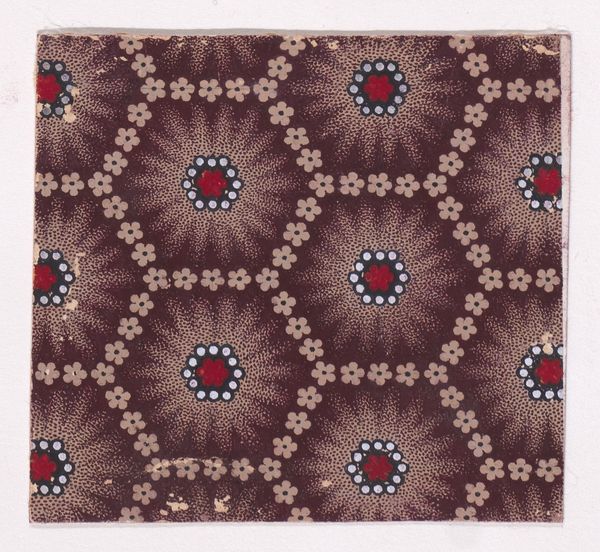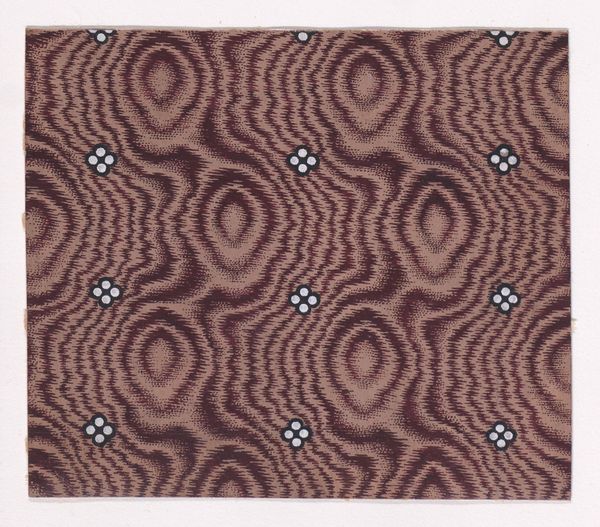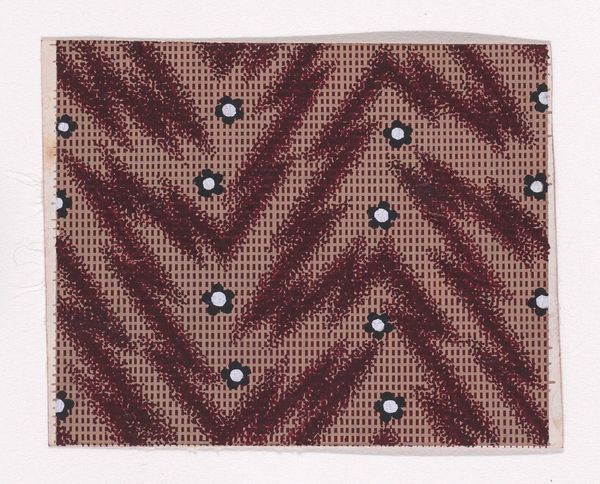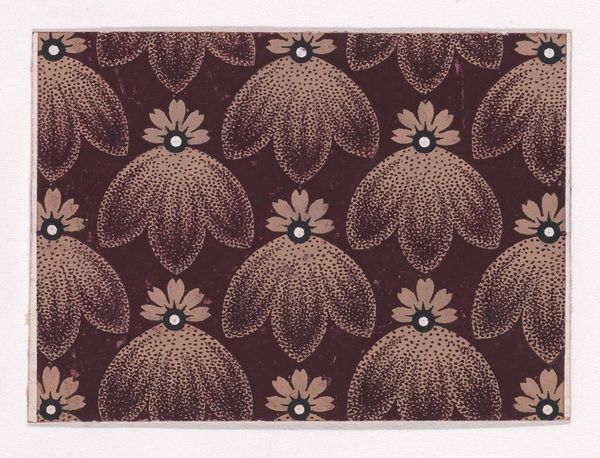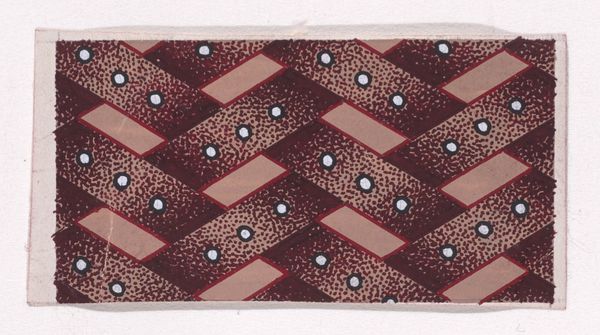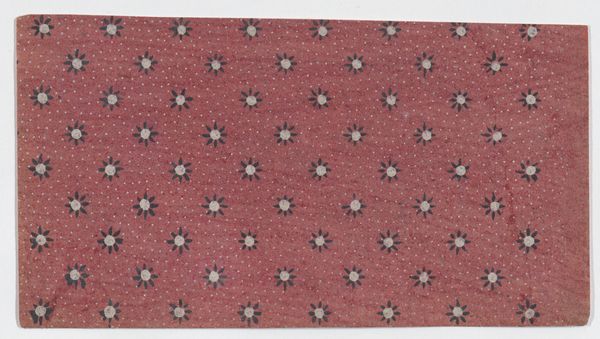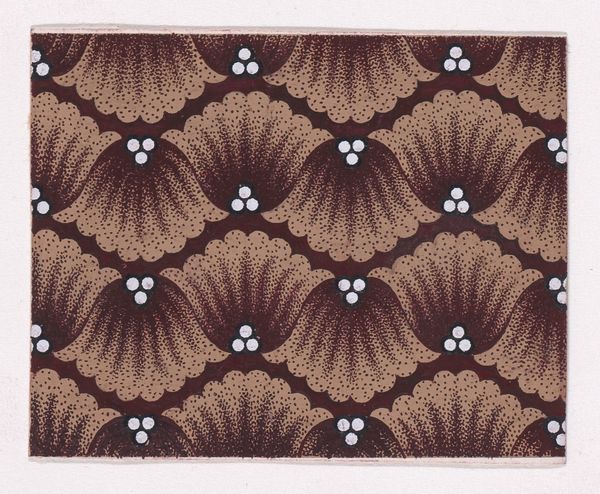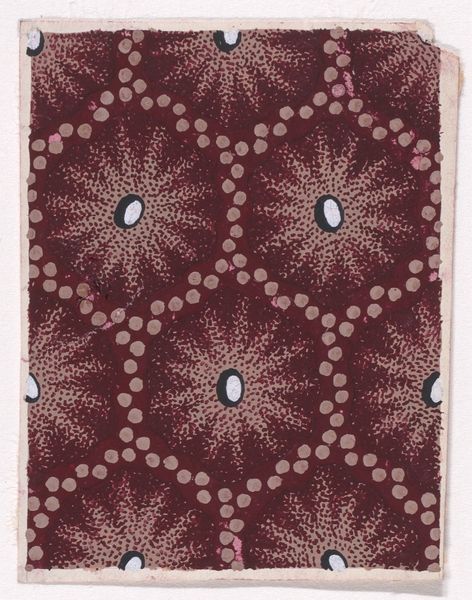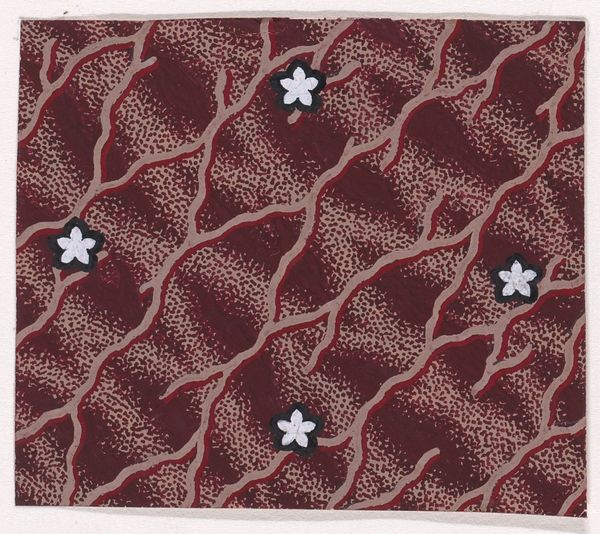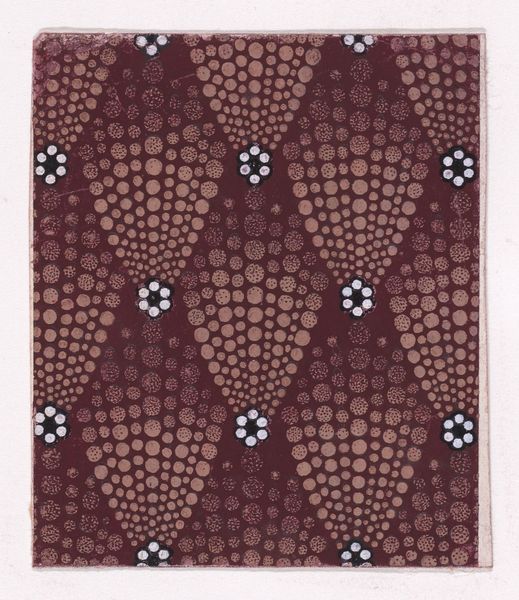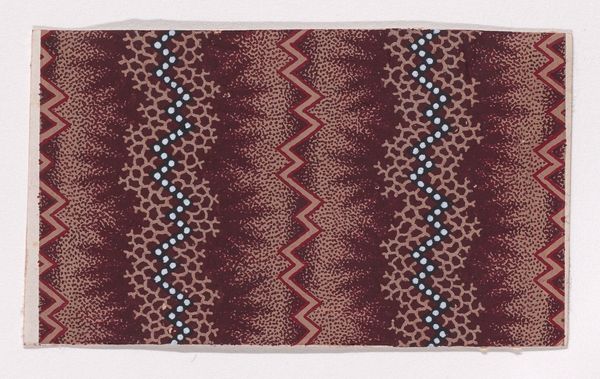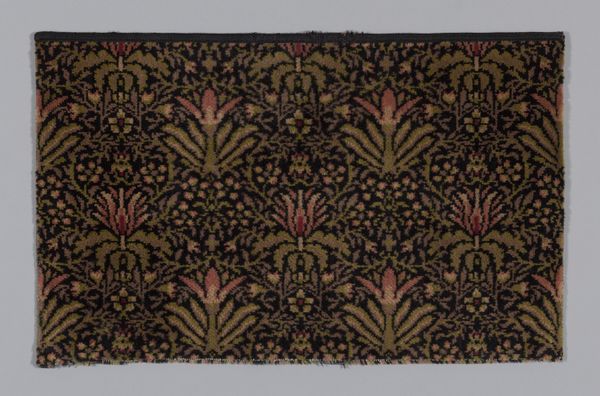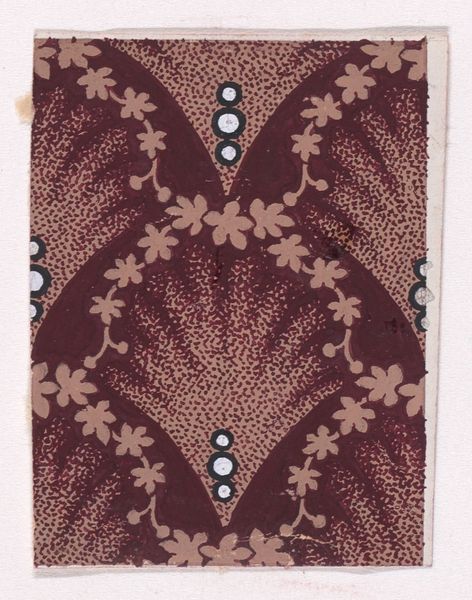
Textile Design with Rosettes Forming Hexagonal Shapes Around Swirls 1840
0:00
0:00
Dimensions: Sheet: 2 3/8 × 3 3/16 in. (6.1 × 8.1 cm)
Copyright: Public Domain
Curator: Oh, I’m immediately drawn to the hypnotic quality of this piece. All those flowers, swirling and blooming... it's mesmerizing! Editor: It’s textile design from 1840; its full title is 'Textile Design with Rosettes Forming Hexagonal Shapes Around Swirls.' This captivating textile, housed here at the Metropolitan Museum of Art, reveals a meticulous attention to geometric and organic motifs. Curator: Hexagonal shapes...yes, I can see it now. I was too caught up in the rhythm of the rosettes, the subtle shifts in color giving each flower a slightly different voice. It’s like they are singing together! Do we know the creator of this particular song? Editor: Sadly, the artist of this striking print is unknown. What fascinates me, though, is the labor involved in crafting a pattern like this. The print likely originates from industrial production. The way it marries geometric precision with seemingly organic, free-flowing forms speaks to broader shifts occurring with production during this period. Curator: That's interesting. So the hands that physically made this could have been following the strict regularity and still inject their sensibility. And I think it still resonates; those little swirls feel almost modern, abstract. Like early explorations into art that’s meant to move you without depicting something explicitly. Editor: I think you are right about its resonance. Mass production means art entered domestic life much easier through things like textiles; we think about their utilitarian nature, but forget their aesthetic function. Consider the anonymous individual purchasing it; what was their life like, their own relationship with design? These questions are part of understanding art’s true life. Curator: Questions that swirl and bloom like these little rosettes. What was once a purely aesthetic admiration has expanded into considering this pattern's origins in a broader context. Now I have more songs to hear! Editor: Yes! When we focus on process, material, and even consumption, these designs are more than just patterns; they reveal much more.
Comments
No comments
Be the first to comment and join the conversation on the ultimate creative platform.
